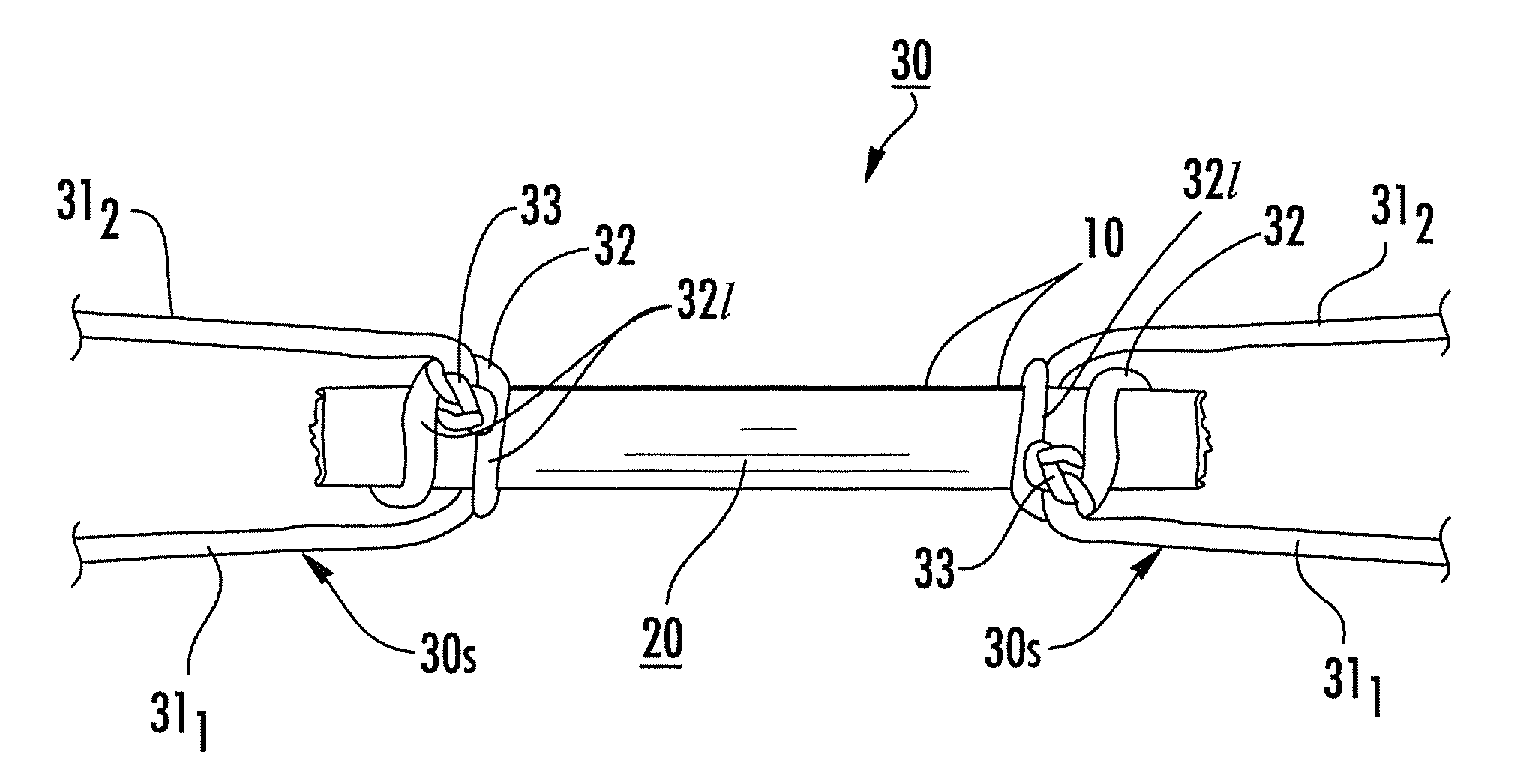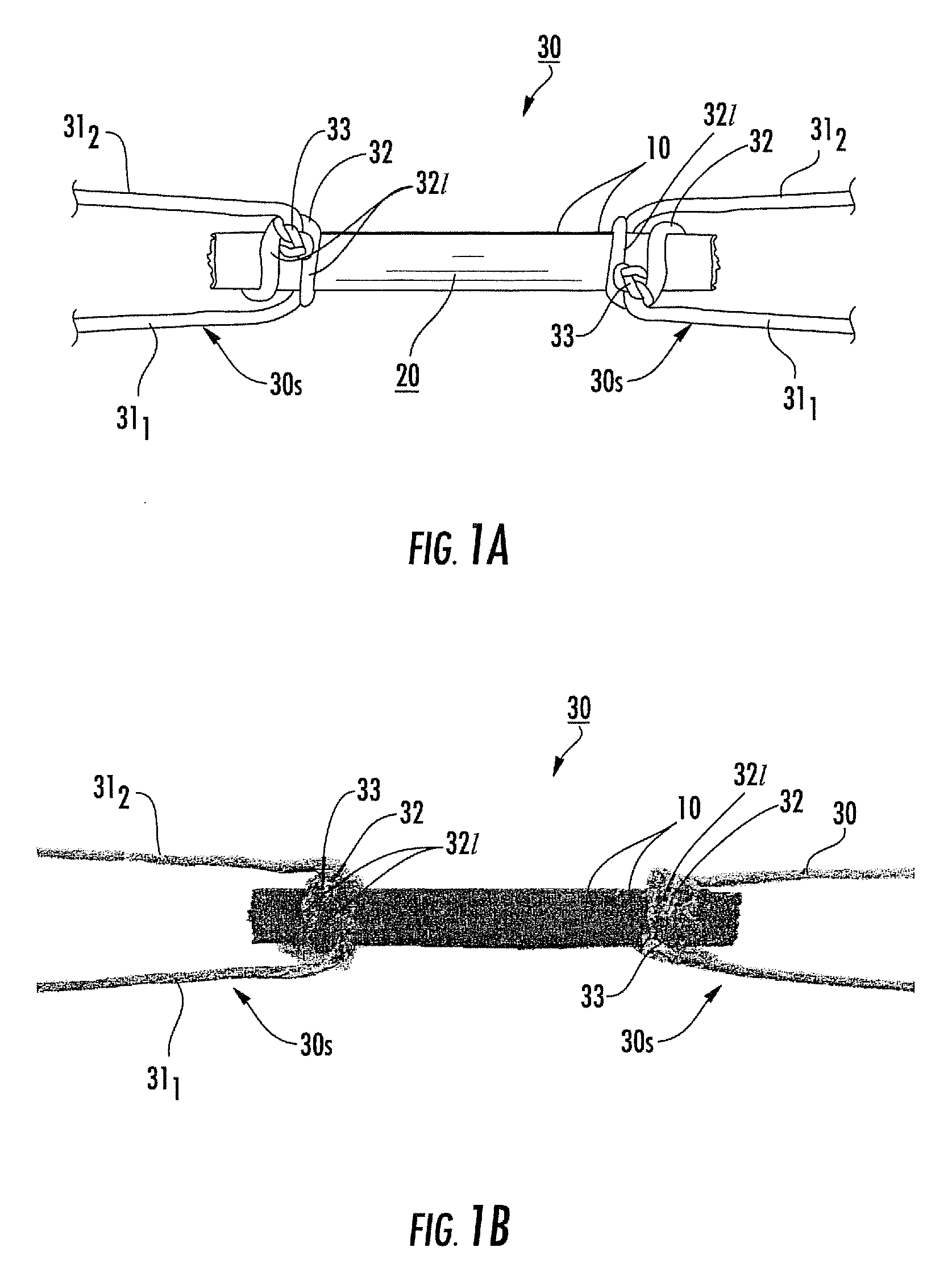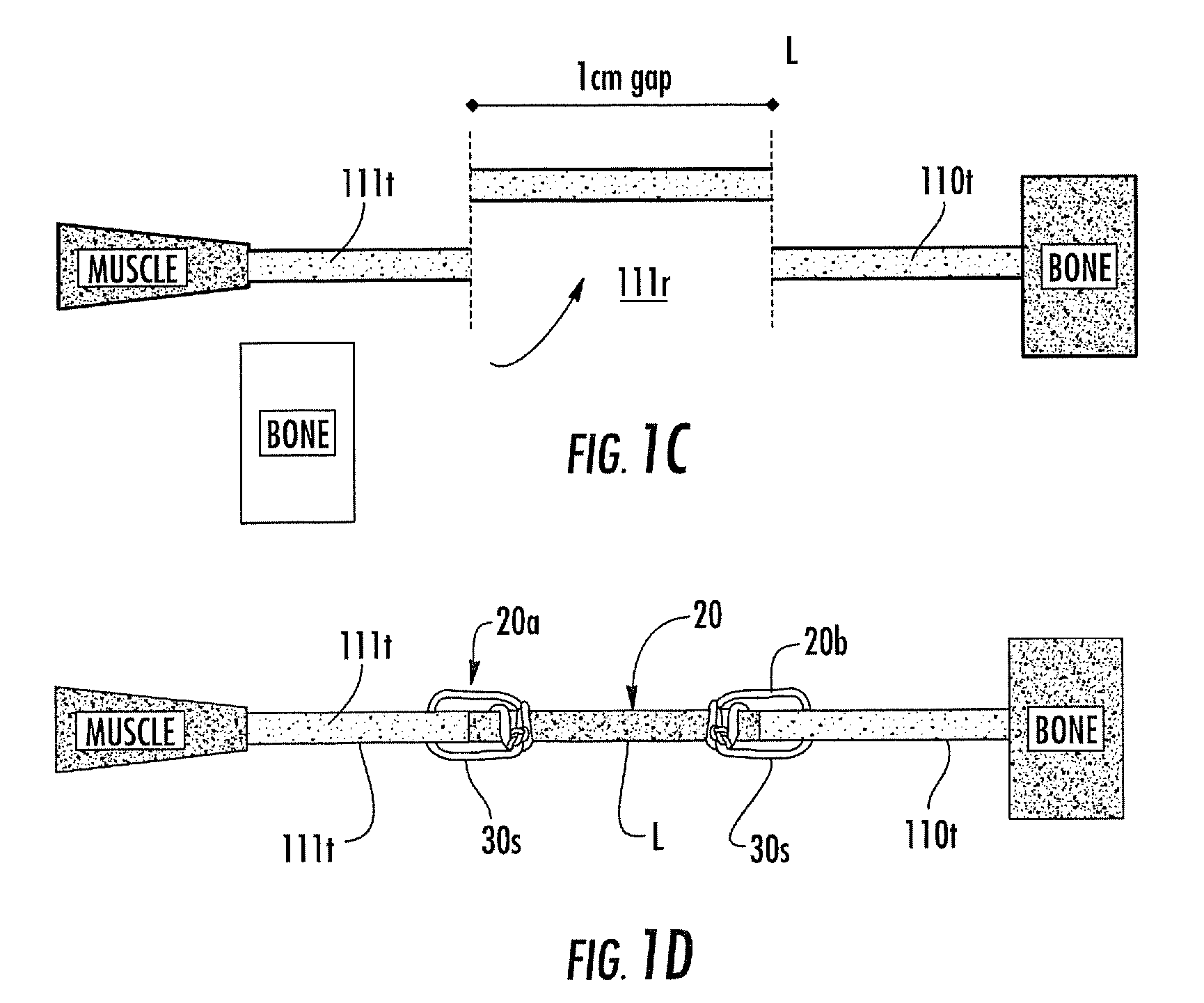Tendon or ligament bioprostheses and methods of making same
a technology of bioprosthesis and tendons, applied in the field of implantable prosthesis, can solve the problems of inability to carry normal loads, difficulty in repairing ruptured or lacerated tendons, and inability to regain original mechanical properties or mobility of the tendon
- Summary
- Abstract
- Description
- Claims
- Application Information
AI Technical Summary
Benefits of technology
Problems solved by technology
Method used
Image
Examples
examples
[0075]Tendon replacement was performed in rabbit Achilles tendon using a parallel array of fibers tied together with a knot made of suture material. The fibers were made from NDGA cross-linked collagen as described above and in U.S. Pat. No. 6,565,960. In-vivo studies were conducted using the rabbit model, wherein a 1 cm gap in the gastrocnemius tendon was replaced with a 16 fiber 1 cm long bioprosthesis (Vicryl 4-0 sutures). The results showed excellent biocompatibility, abundant formation of neo-tendon (FIGS. 6A, 6B) and biomechanical properties reaching 60% of the contralateral normal tendon with 6 weeks (FIG. 7C).
[0076]The Vicryl® suture used a knot that provided a secure attachment to the bundle and organized the parallel array of fibers into a round cross section. Also, the knot positioned the sutures that reach out into the adjacent tissue anchorage at 180 degree to each other in order to cancel out unwanted torque. The knot configuration had a loop around the bundle secured ...
PUM
| Property | Measurement | Unit |
|---|---|---|
| diameter | aaaaa | aaaaa |
| diameter | aaaaa | aaaaa |
| diameter | aaaaa | aaaaa |
Abstract
Description
Claims
Application Information
 Login to View More
Login to View More - R&D
- Intellectual Property
- Life Sciences
- Materials
- Tech Scout
- Unparalleled Data Quality
- Higher Quality Content
- 60% Fewer Hallucinations
Browse by: Latest US Patents, China's latest patents, Technical Efficacy Thesaurus, Application Domain, Technology Topic, Popular Technical Reports.
© 2025 PatSnap. All rights reserved.Legal|Privacy policy|Modern Slavery Act Transparency Statement|Sitemap|About US| Contact US: help@patsnap.com



